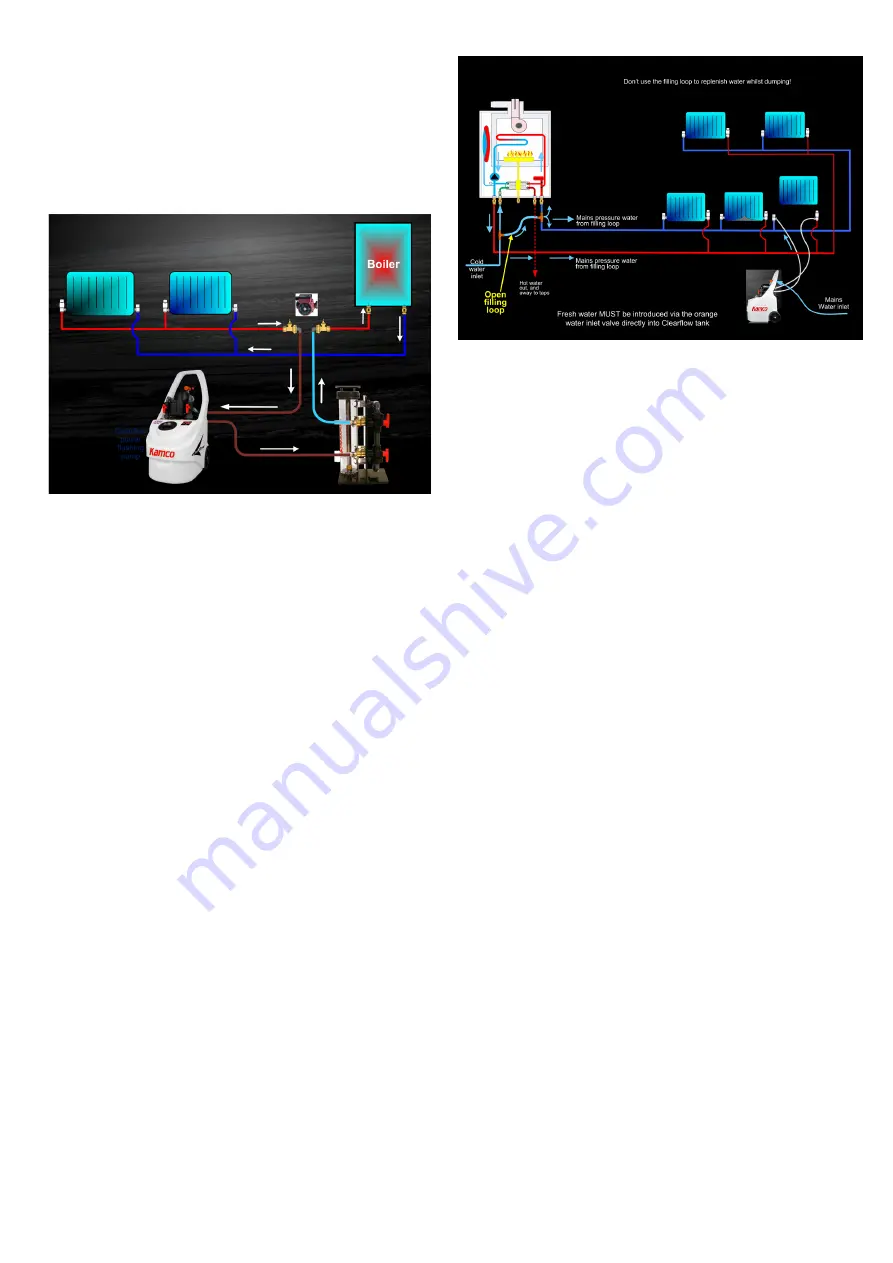
This is installed between the heating system and the
power flushing pump, and extracts magnetite (the major
corrosion constituent) from the circulating water, which
consequently clears much faster, reducing the time taken
to obtain clear fresh water throughout the system. The
volume of water required to power flush a system is also
significantly reduced.
Miscellaneous
Q. Can you use the pump to add corrosion inhibitor to a
system?
A. Yes, it’s a good way to get corrosion inhibitor
rapidly into a system and thoroughly dispersed. Before
disconnecting the Clearflow pump, lower the water level
in the tank to just above the minimum level, close the
dump valve, and add the inhibitor into the Clearflow tank.
Allow circulation through the system for ten minutes
before finally disconnecting.
Part L: 2006 of the Building Regulations now require that
a system is treated with corrosion inhibitor. Benchmark
members specify the use of an inhibitor which has
passed the NSF/Buildcert performance standard. Suitable
inhibitors, such as Kamco Systemsafe-DM, will display the
Buildcert logo, so check for this to ensure that you use an
inhibitor that has been performance tested.
Q. When flushing a system with a combination boiler
fitted with a filling loop, do I need to connect a water
supply hose to the orange Clearflow water inlet valve?
Can’t I just run water in through the filling loop during
dumping?
A. No. It is important that fresh water is fed into the
system via the Clearflow tank. Introducing the water
through a filling loop elsewhere will destroy the high
velocity mono-directional flow and hence the efficiency
of the whole power flushing process.
Q. I’m working on a house with a water softener
installed on the water supply. Is there any problem if I
fill the system with artificially softened water after the
power flush? Can Systemsafe-DM inhibitor be used?
A. Systemsafe-DM can be used for systems containing
artificially softened water, and will give a significant
degree of protection.
However, you should be aware that by using artificially
softened water you are risking a higher level of corrosion.
Artificially softened water is inherently more corrosive
than either hard or naturally soft water, for good sound
chemical reasons, hence ANY inhibitor will have to work
harder, and pitting of aluminium is always a possibility.
Any new water softener installation complying with
guidelines will have a by-pass. We suggest that you by-
pass the water softener whilst filling the system, then
re-open the by-pass and enjoy the benefits of artificially
softened water elsewhere in the house. Prudent boiler
manufacturers take the view that if you can use water
that is less aggressive, then you should.
Background information:
BEAMA Water Treatment is a trade association to which
the market leading inhibitor manufacturer members
(including Kamco) belong, and BEAMA members advise
customers and installers in the supply chain against using
softened water in the primary side of heating systems.
Although a good corrosion inhibitor can minimise
corrosion problems, BEAMA statistics show that 74%
of sampled systems have inadequate/no inhibitor or
are under-dosed, and such systems when filled with
artificially softened water are at considerable risk.
Q. Baxi say don’t power flush a Solo 2- why is that?
A. Baxi had a kettling problem with heat exchangers in
Page 16

















